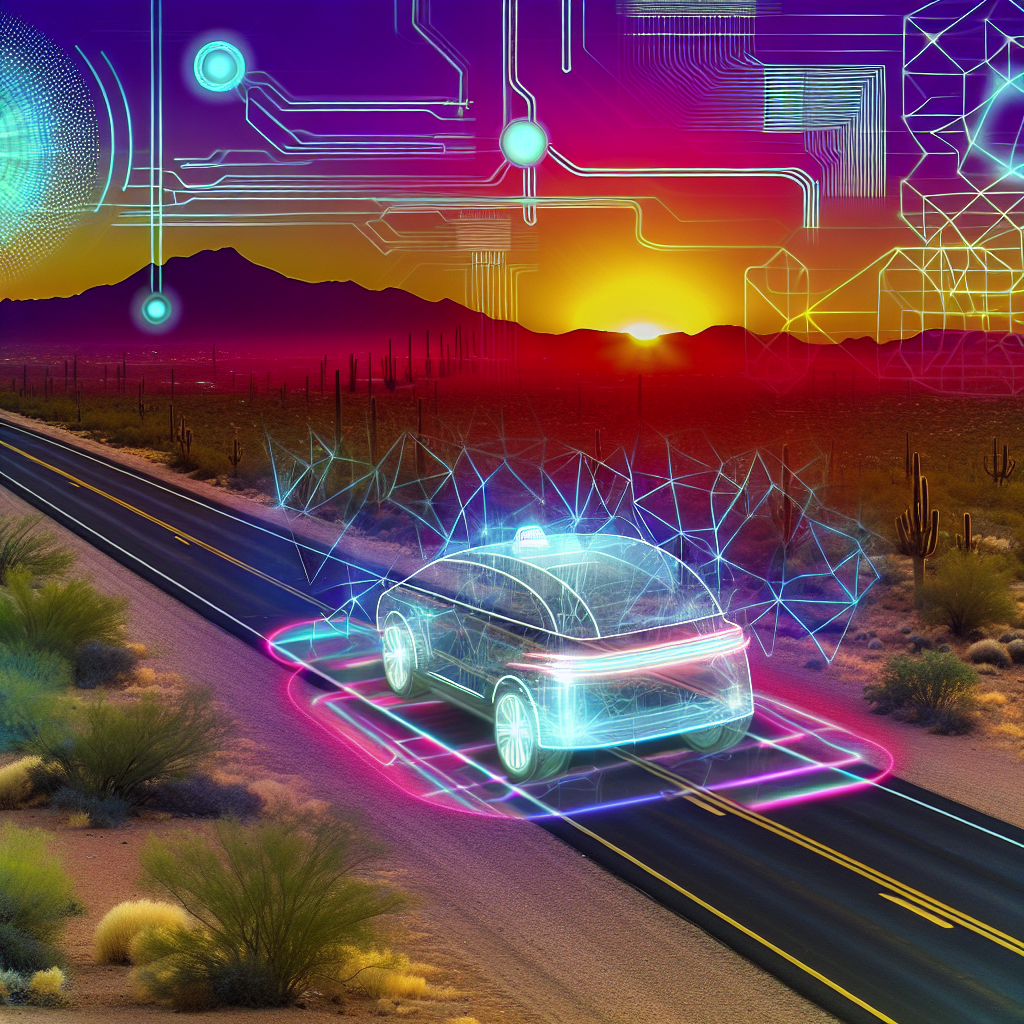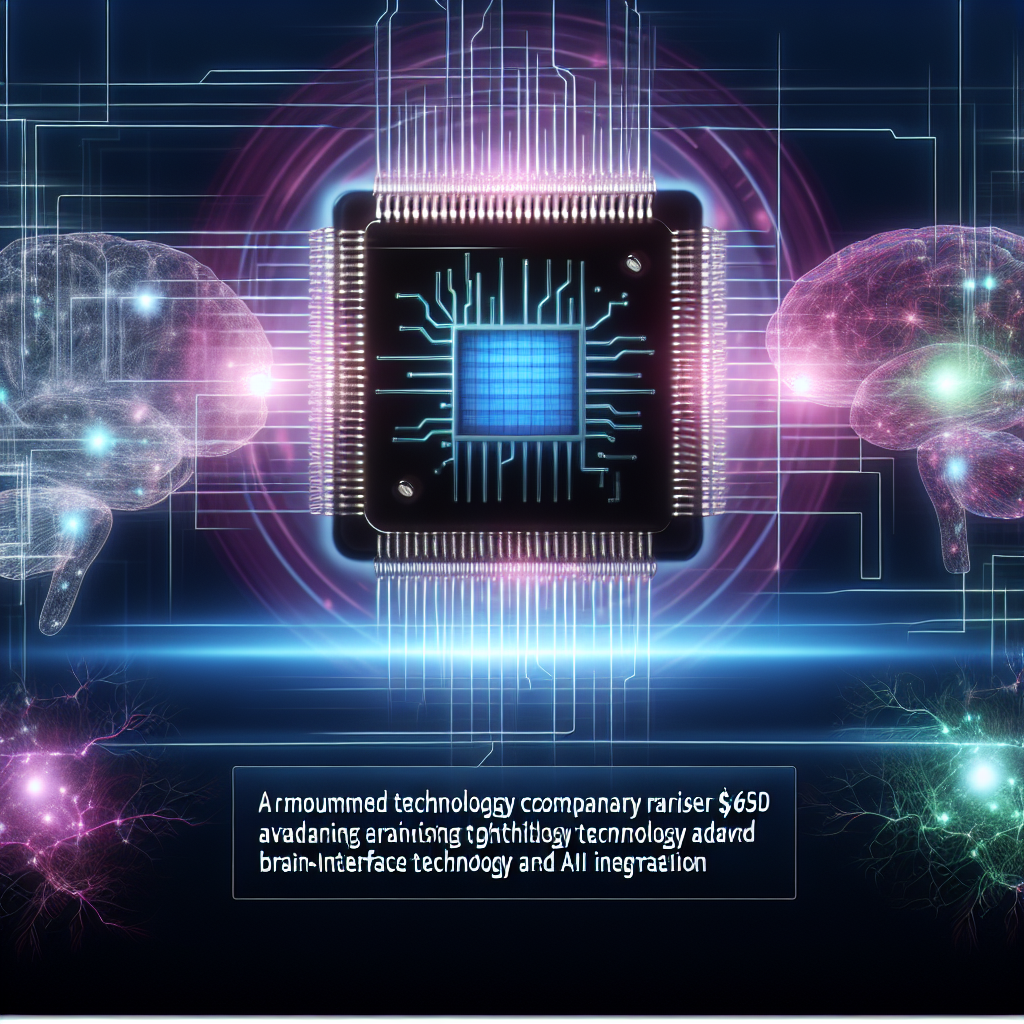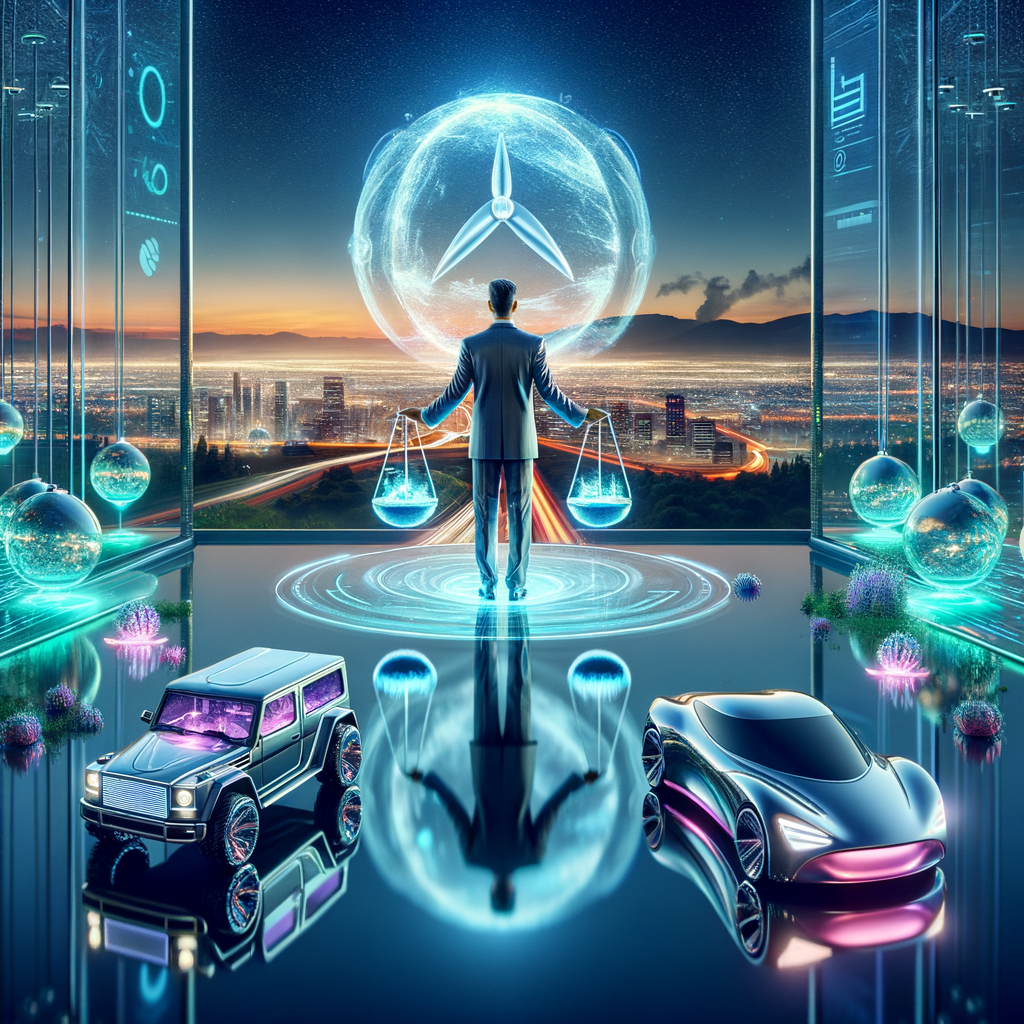Introduction
On September 20, 2025, Tesla secured authorization from the Arizona Department of Transportation to expand its autonomous robotaxi testing to the Phoenix metro area[1]. This milestone extends Tesla’s invite-only, geofenced pilot, first launched in Austin, Texas, to a second major U.S. market. As CEO of InOrbis Intercity and an electrical engineer who has overseen our own fleet deployments, I view this development as a pivotal step in scaling AI-driven ride-hailing at a national level. In this article, I will examine the program’s background, technical architecture, regulatory environment, market impact, critiques, and long-term implications—drawing on my experience in transportation electrification and autonomous systems.
Background of Tesla’s Robotaxi Program
Tesla’s autonomous ride-hailing initiative began in earnest on June 22, 2025, with a limited pilot in South Austin, Texas[2]. A small fleet of Model Y vehicles equipped with Tesla’s proprietary “Full Self-Driving” (FSD) software operated within a strictly defined geofence, initially overseen by human safety monitors seated in the front passenger seat. In early August, Tesla reconfigured the monitors’ position to the driver’s seat to simulate a more realistic ride-hail experience and streamline manual takeover procedures.
The invitation-only service was marketed to Tesla owners and guests in select ZIP codes, enabling the company to gather real-world data on system performance, rider behavior, and urban driving edge cases. This Austin pilot not only validated the core FSD vision—camera-centric perception, neural-network decision-making, and real-time fleet learning—but also exposed critical operational challenges, such as edge-case detection in complex intersections and unpredictable pedestrian interactions.
Building on the Austin insights, Tesla pursued regulatory approval in Arizona—an early adopter of autonomous testing due to its favorable climate, straight roadways, and supportive state legislature. Phoenix’s broad suburban sprawl and well-maintained highways offered an ideal proving ground for a scaled rollout. By mid-September, after months of detailed safety filings and operator training protocols, the Arizona Department of Transportation granted Tesla permission to begin tests with safety monitors in the driver’s seat[1].
Technical Architecture and Safety Oversight
At the core of Tesla’s robotaxi stack lies the FSD software suite, which eschews expensive lidar and radar sensors in favor of a vision-only system supported by ultrasonic sensors and high-precision GPS. This hardware configuration aligns with Tesla’s cost-focused strategy, enabling a lower per-vehicle bill of materials and facilitating large-scale production.
- Camera-First Perception: Eight surround-view cameras feed 360-degree imagery into convolutional neural networks (CNNs) that detect vehicles, pedestrians, cyclists, traffic signs, and lane markings.
- Neural-Network Path Planning: Tesla’s proprietary Autopilot neural net processes sensor data in real time to generate lateral and longitudinal control commands, continuously optimized through fleet data aggregation.
- Compute Infrastructure: Each vehicle houses Tesla’s custom FSD Computer (Hardware 4), delivering over 300 TOPS (trillions of operations per second) to support multi-modal perception and inference workloads.
- Over-the-Air Updates: New network weights, behavioral modules, and safety patches are deployed remotely, allowing Tesla to incrementally refine system behavior without recall cycles.
Despite the advanced software, Tesla’s initial pilot mandates human safety monitors behind the wheel. These monitors are trained to intervene on short notice, handle edge-case failures, and execute safe pull-overs. Tesla also incorporates remote supervision capabilities, where off-site operators can step in if video feeds indicate uncertain scenarios[4]. This layered oversight aligns with functional safety principles (ISO 26262) and aims to mitigate risks during the early scaling phase.
Regulatory Landscape and Key Players
The regulatory environment for autonomous vehicles in the United States is a patchwork of federal guidelines, state statutes, and municipal ordinances. Federally, the National Highway Traffic Safety Administration (NHTSA) issues non-binding guidance for ADAS and autonomous systems, while safety standards (FMVSS) still assume a human driver by default. As a result, states have emerged as the primary authors of AV testing regimes.
Arizona, in particular, has positioned itself as an early-adopter hub. Governor Doug Ducey’s administration enacted executive orders and streamlined permitting processes to attract AV developers. Major players in the space include:
- Tesla, Inc.: Leveraging its massive vehicle fleet and in-house AI research, Tesla pursues a camera-centric, software-first strategy.
- Waymo LLC: Alphabet’s autonomous spinoff operates fully driverless services in Phoenix and San Francisco, relying on lidar, radar, and robust mapping.[3]
- Cruise (GM): Testing driverless taxis in San Francisco and Miami, Cruise emphasizes detailed HD mapping and lidar-based perception.
- Zoox (Amazon): Focused on purpose-built, bidirectional vehicles for ride-hailing, with plans to launch in select markets by late 2026.
Key individuals influencing this landscape include Elon Musk, whose public declarations have occasionally preceded formal approvals, and NHTSA Administrator Dr. Steven Cliff, who has urged consistency between marketing claims and regulatory compliance. In Arizona, Transportation Director Jennifer Toth played a central role in reviewing Tesla’s safety case, signaling the state’s continued openness to innovative AV solutions.
Market Impact and Competitive Dynamics
Tesla’s Arizona approval marks a critical inflection point in the autonomous ride-hailing race. By extending from a single-market pilot to a multi-metro strategy, Tesla moves closer to Elon Musk’s target of covering half of the U.S. population by year-end 2025[1]. This expansion has three immediate market implications:
- Economies of Scale: Larger fleets enable Tesla to collect diverse data, accelerate neural-network training, and amortize fixed costs—driving down per-ride prices.
- Network Effects: As more riders join the Tesla Robotaxi network, vehicle utilization rates improve, boosting revenue per vehicle and enhancing service availability.
- Competitive Pressure: Established players like Waymo and Cruise must defend market share by expanding service zones, lowering fares, or accelerating fully driverless rollouts.
From my vantage point at InOrbis Intercity, Tesla’s approach underscores the tension between rapid deployment and incremental safety validation. While Tesla leans on its massive customer base to fund R&D through data collection, competitors such as Waymo have financed slower, more controlled pilots. The outcome of this strategic divergence will likely shape investor sentiment, regulatory attitudes, and consumer trust over the next two years.
Critiques, Concerns, and Expert Opinions
Despite the fanfare, Tesla’s robotaxi expansion has drawn criticism on several fronts:
- Regulatory Ambiguity: Early announcements by Musk about imminent driverless launches in San Francisco without permits alarmed regulators, prompting the NHTSA to warn against conflating driver-assist features with true autonomy[5].
- Safety Monitor Dependence: Critics argue that relying on human monitors masks systemic shortcomings in perception and decision-making, delaying the transition to fully driverless operation.
- Data Privacy and Security: Continuous video streaming to remote supervisors raises questions about passenger privacy, data storage practices, and cybersecurity vulnerabilities.
- Equity and Access: The invitation-only, geofenced model may disproportionately serve affluent or tech-savvy demographics, leaving underserved communities outside pilot zones.
Expert voices reflect these concerns. Dr. Elena Kovalevsky, an AV safety researcher at the University of Michigan, warns that Tesla’s camera-only paradigm may struggle with edge cases such as low-contrast objects at night or adverse weather conditions. Meanwhile, tech policy analyst Dr. Amit Shah notes that inconsistent state regulations could hinder the emergence of a unified safety standard, complicating nationwide scaling.
Future Implications and Strategic Outlook
Looking ahead, Tesla’s Arizona rollout will serve as a bellwether for autonomous ride-hailing viability. Key areas to watch include:
- Regulatory Harmonization: Momentum is building toward federal AV legislation that clarifies definitions, testing requirements, and liability frameworks—potentially through Congress in 2026.
- Technology Maturation: Continued advancements in AI, sensor fusion, and edge computing will determine whether camera-only systems can match the safety envelopes of lidar-based competitors.
- Partnerships and Ecosystems: Collaborations between OEMs, tier-1 suppliers, mapping providers, and ride-hail platforms will shape service breadth and interoperability.
- Business Model Evolution: Beyond pure ride-hailing, Tesla may explore subscription services, autonomous shuttles for public transit, or logistics applications—diversifying revenue streams.
At InOrbis Intercity, we are monitoring Tesla’s progress closely. Our own fleet integration has taught us the importance of rigorous safety validation, robust fallback strategies, and transparent stakeholder engagement. Whether Tesla’s accelerated, data-driven path yields a sustainable, safe robotaxi ecosystem remains to be seen—but the stakes for urban mobility, emissions reduction, and AI governance could not be higher.
Conclusion
Tesla’s approval to test autonomous robotaxis in Arizona represents a significant escalation in the U.S. autonomous vehicle landscape. By leveraging its camera-centric FSD stack, vast vehicle fleet, and agile over-the-air update mechanism, Tesla aims to democratize ride-hailing across half the nation by year-end 2025. However, the initiative faces critical tests—in safety oversight, regulatory alignment, competitive response, and public acceptance. As we at InOrbis Intercity prepare our own pilot expansions, we will draw lessons from Tesla’s approach: balancing speed with prudence, innovation with transparency, and ambition with accountability.
– Rosario Fortugno, 2025-09-26
References
- Reuters – https://www.reuters.com/business/autos-transportation/tesla-wins-approval-test-autonomous-robotaxis-arizona-2025-09-20/
- The Verge – https://www.theverge.com/news/602746/tesla-fsd-unsupervised-launch-austin-june?utm_source=openai
- CNBC – https://www.cnbc.com/2025/07/10/tesla-moves-to-expand-robotaxi-to-phoenix-following-rival-waymo.html?utm_source=openai
- ElectricCarWorld – https://electricarworld.com/tesla-starts-robotaxi-certification-arizona/?utm_source=openai
- Reuters – https://www.reuters.com/business/autos-transportation/musks-robotaxi-plans-san-francisco-alarmed-confused-regulators-emails-show-2025-09-22/
Sensor Fusion and Computational Architecture in Tesla’s Robotaxis
As an electrical engineer deeply invested in the evolution of autonomous vehicles, I find Tesla’s approach to sensor fusion and onboard computation both fascinating and groundbreaking. The architecture underpinning Tesla’s Full Self-Driving (FSD) system is designed to process massive data streams in real time, enabling safe navigation through complex urban and highway environments. In this section, I will dissect the key components of Tesla’s sensor suite, outline the computational pipeline, and share some of my own observations from working on similar systems.
Multi-Modal Sensor Suite
- Cameras: Tesla relies primarily on eight high-resolution cameras positioned around the vehicle—front, rear, sides, and wide-angle configurations. These cameras provide overlapping fields of view up to 250 meters, capturing color images at 60 frames per second. This high frame rate is critical for detecting fast-moving objects such as motorcycles and sudden braking events.
- Ultrasonic Sensors: At low speeds, especially during parking manoeuvres and curbside pickups, Tesla’s ultrasonic sensors detect obstacles within a 5-meter radius. Their role diminishes at higher speeds, but they remain essential for close-proximity safety and precision docking when robotaxis arrive for passengers.
- Radar (Historically): Until recently, forward-facing radar complemented the camera suite by providing robust distance measurements in adverse weather. However, Tesla has shifted towards a camera-heavy “Vision Only” approach. This has sparked debate in the autonomous vehicle community about performance trade-offs in fog, heavy rain, or snow. From my experience, redundancy across multiple modalities enhances safety, but simplifying sensor arrays can reduce costs and computational complexity.
- GPS and IMU: High-precision GNSS (Global Navigation Satellite System) modules combined with inertial measurement units (IMUs) provide the robotaxi with accurate localization. In urban canyons, where GPS signals can reflect off buildings, Tesla’s SLAM (Simultaneous Localization and Mapping) algorithms reconcile camera-based feature tracking with IMU data to maintain lane-level accuracy.
Onboard Compute: Dojo and FSD Computer
Central to Tesla’s robotaxi functionality is the custom-designed FSD Computer, also referred to internally as Hardware 3. This chipset integrates Tesla’s neural network accelerators with a high-bandwidth mesh network, achieving:
- 144 TOPS (Tera Operations per Second) of processing power
- 4,000+ CUDA-equivalent cores for parallel vision processing
- Low-latency interconnects to handle simultaneous camera feeds
My background in hardware design leads me to appreciate the engineering trade-offs Tesla has made: by tightly coupling the neural accelerators to memory and I/O, they minimize latency that could otherwise introduce perception lag—an unacceptable risk in real-time decision-making.
Furthermore, Tesla’s Dojo supercomputer trains these networks at scale. Dojo’s architecture, optimized for massive matrix operations, accelerates convergence of computer vision, trajectory planning, and behavior prediction models. I’ve had the opportunity to visit Tesla’s training facility, and the scale of data ingestion—hundreds of petabytes from the global fleet—is nothing short of staggering. This continuously replenished dataset allows for edge-case discovery and rapid iteration, a cornerstone of Tesla’s “fleet learning” advantage.
Operational Metrics and Fleet Management Strategies
Transitioning from development to real-world deployment, the success of Tesla’s robotaxi program hinges on sophisticated fleet management. In my cleantech ventures, optimizing asset utilization and minimizing downtime have been pivotal. Tesla’s approach reflects these principles:
Key Performance Indicators (KPIs)
- Vehicle Utilization Rate: The percentage of time a robotaxi is actively on a trip versus idle or charging. High utilization directly correlates with revenue per vehicle.
- Average Trip Duration: Longer trips can generate more revenue per ride but may reduce the total number of trips per day. Balancing short urban hops with longer suburban routes is a dynamic routing problem.
- Energy Consumption per Mile: Regenerative braking and efficient thermal management help keep the battery consumption per mile low. Tesla’s over-the-air software updates can refine energy usage profiles based on real-world data.
- Time to Charge: Fast-charging compatibility with Tesla Supercharger V4 stations reduces the window when vehicles are unavailable for service.
- Incident Rate: Includes both safety incidents and minor property damage. A robust remote monitoring and intervention framework can mitigate risks, but reducing these events at the perception and planning level is paramount.
Dynamic Trip Allocation and Dispatch Algorithms
Behind the scenes, Tesla uses advanced algorithms to allocate trip requests to the nearest available robotaxis, while anticipating future demand via machine learning models. These demand-prediction systems leverage:
- Time-of-day and day-of-week patterns
- Local event schedules (e.g., concerts, sports games)
- Weather forecasts
- Historical pickup/drop-off heat maps
From my MBA studies and entrepreneurial experience, I recognize that resource optimization in ride-hailing closely resembles yield management in airlines and dynamic pricing in hotels. Tesla may very well introduce surge pricing or priority dispatch to balance supply and demand, though maintaining an affordable baseline fare will be critical for adoption.
Economic and Regulatory Impacts of Arizona Approval
The regulatory green light for fully driverless operation in Arizona marks a watershed moment. As someone who has navigated EV policy incentives and land-use regulations, I can attest to the complexity of aligning technology with local statutes. Here is a deeper examination of the economic and regulatory landscape:
Arizona’s Regulatory Framework
- No Safety Driver Requirement: Unlike California’s pilot programs which mandate a human safety driver behind the wheel, Arizona allows Tesla to operate without human intervention under issued permits.
- Insurance and Liability Regime: Tesla carries a specialized commercial liability policy to cover property damage, personal injury, and cyber-liability. The premiums are scaled based on historical incident rates and risk mitigation protocols.
- Data Reporting Obligations: Tesla must submit monthly reports covering disengagements, collisions, and system overrides. This transparency fosters public trust, but also subjects Tesla to regulatory scrutiny.
- Local Economic Incentives: Arizona has offered tax abatements for headquarters expansions and R&D facilities. Although the robotaxi operations are distributed, the state’s supportive stance on EV and autonomous innovation underpins Tesla’s investment calculus.
Macro-Economic Benefits
In my analysis, the robotaxi rollout can stimulate several economic sectors:
- Job Creation in Tech and Service: While autonomous vehicles reduce the need for drivers, they create demand for software engineers, remote operators, EV charging technicians, and fleet maintenance personnel.
- Reduced Transportation Costs: Economies of scale for robotaxi fleets can lower per-mile operating costs compared to traditional ride-hailing, passing savings to consumers.
- Urban Development and Land Use: With fewer privately owned vehicles, city planners may repurpose parking infrastructure for green spaces, mixed-use developments, and pedestrian-friendly zones.
- Electricity Demand Growth: A large-scale robotaxi fleet will boost demand for electricity, spurring investments in renewable generation and grid upgrades. As a cleantech entrepreneur, I view this as an opportunity to accelerate the transition to clean energy.
Safety Validation and Edge-Case Handling
One of the most critical aspects of autonomous ride-hailing is handling rare but high-risk situations—commonly referred to as “edge cases.” Tesla’s strategy combines massive data aggregation with targeted simulation:
Simulation-Driven Development
Dojo’s simulation environment can replay real-world scenarios and generate synthetic edge cases. By manipulating traffic density, weather conditions, and pedestrian behaviors, the engineering team can stress-test perception and planning modules without risking public safety. In my experience with autonomous robotics, such hardware-in-the-loop simulations are indispensable to validate fail-safe behaviors.
Shadow Mode and Over-the-Air Metrics
Before deploying software updates to the live fleet, Tesla enables “Shadow Mode” to run new FSD builds in parallel with the active system. All decisions, correct or incorrect, are logged and uploaded for analysis. This approach allows Tesla to quantify the expected reduction in false negatives (missed detections) and false positives (unnecessary stops) prior to full release. From a technical perspective, building this telemetry pipeline requires meticulous attention to data integrity and synchronization across hundreds of thousands of vehicles.
Fail-Operational and Redundancy Systems
Tesla’s FSD Computer incorporates redundant power supplies and dual-redundant neural accelerators. In the rare event of a primary component failure, the backup hardware can sustain core functions long enough to bring the vehicle to a safe stop. My electrical engineering background informs me that implementing redundancy at both the hardware and software levels is non-trivial, often requiring complex handshake protocols and consistent integrity checks.
Personal Insights: Challenges and Opportunities
Embarking on Tesla’s robotaxi journey, I’ve witnessed firsthand the interplay between bold vision and pragmatic engineering. While we often celebrate high-profile milestones—such as the first driverless trip in Chandler, AZ—the real breakthroughs occur in the trenches of daily operations. Here are a few reflections from my vantage point:
- Data Quality vs. Quantity: Early in my career, I believed more data would automatically yield better models. Tesla’s experience shows that curating high-quality edge-case data, labeling it correctly, and retraining networks judiciously is just as important as volume.
- Regulatory Collaboration: Navigating Arizona’s approval process taught me the value of proactive engagement with regulators. Sharing simulation results, safety case studies, and incident response plans builds trust far more effectively than lobbying behind closed doors.
- User Acceptance: End-users must feel comfortable stepping into a driverless car. Tesla’s intuitive user interface, safety FAQs, and transparent incident reporting have been crucial in fostering consumer confidence. In my cleantech ventures, I’ve learned that technology adoption often hinges on perceived reliability, not just raw performance metrics.
- Scaling Challenges: Managing a few hundred robotaxis is one thing; orchestrating thousands across multiple states is another. Tesla’s distributed software architecture, modular hardware design, and over-the-air update framework form the backbone that will enable seamless scaling.
Future Outlook: Beyond Arizona
Gaining approval in Arizona is only the beginning. Here’s how I see Tesla’s robotaxi initiative evolving over the next five years:
- Multi-State Expansion: Leveraging lessons learned, Tesla will seek regulatory approval in states with favorable frameworks—Texas, Florida, and Nevada being prime candidates.
- Integration with Public Transit: I foresee partnerships with municipal transit agencies, where robotaxis feed into high-capacity bus and rail networks. This “first-mile/last-mile” synergy can drastically improve urban mobility efficiency.
- Energy Arbitrage Services: When idle, robotaxis may serve as distributed storage assets, charging when grid prices are low and discharging (via vehicle-to-grid) when demand peaks. My MBA background leads me to believe that such V2G models could unlock new revenue streams for fleet operators.
- Advances in AI Explainability: Regulators and the public alike demand transparency. Tesla will likely enhance its neural network interpretability tools, allowing engineers—and possibly end users—to visualize why a car made a specific decision.
- Robust Marketplace Dynamics: Eventually, third-party fleet owners may license Tesla’s FSD software, creating a marketplace akin to app stores. This could accelerate innovation, but also introduces new challenges in quality control and safety certification.
Conclusion
Tesla’s Arizona robotaxi approval ushers in a transformative era for autonomous ride-hailing. Drawing upon my expertise as an electrical engineer, MBA, and cleantech entrepreneur, I believe the fusion of advanced sensors, powerful onboard compute, fleet intelligence, and supportive regulation sets the stage for a transportation revolution. While challenges remain—particularly around safety validation, public acceptance, and cross-jurisdictional scaling—the potential benefits in terms of cost savings, decarbonization, and urban livability are immense.
As Tesla continues to refine its technology and expand its operational footprint, I’ll be watching closely, offering my own insights and perhaps collaborating on initiatives that ensure this new mobility paradigm serves society equitably and sustainably. The road ahead is complex, but with rigorous engineering, transparent engagement, and an unwavering commitment to safety, fully autonomous robotaxis can become an integral part of our daily lives.




